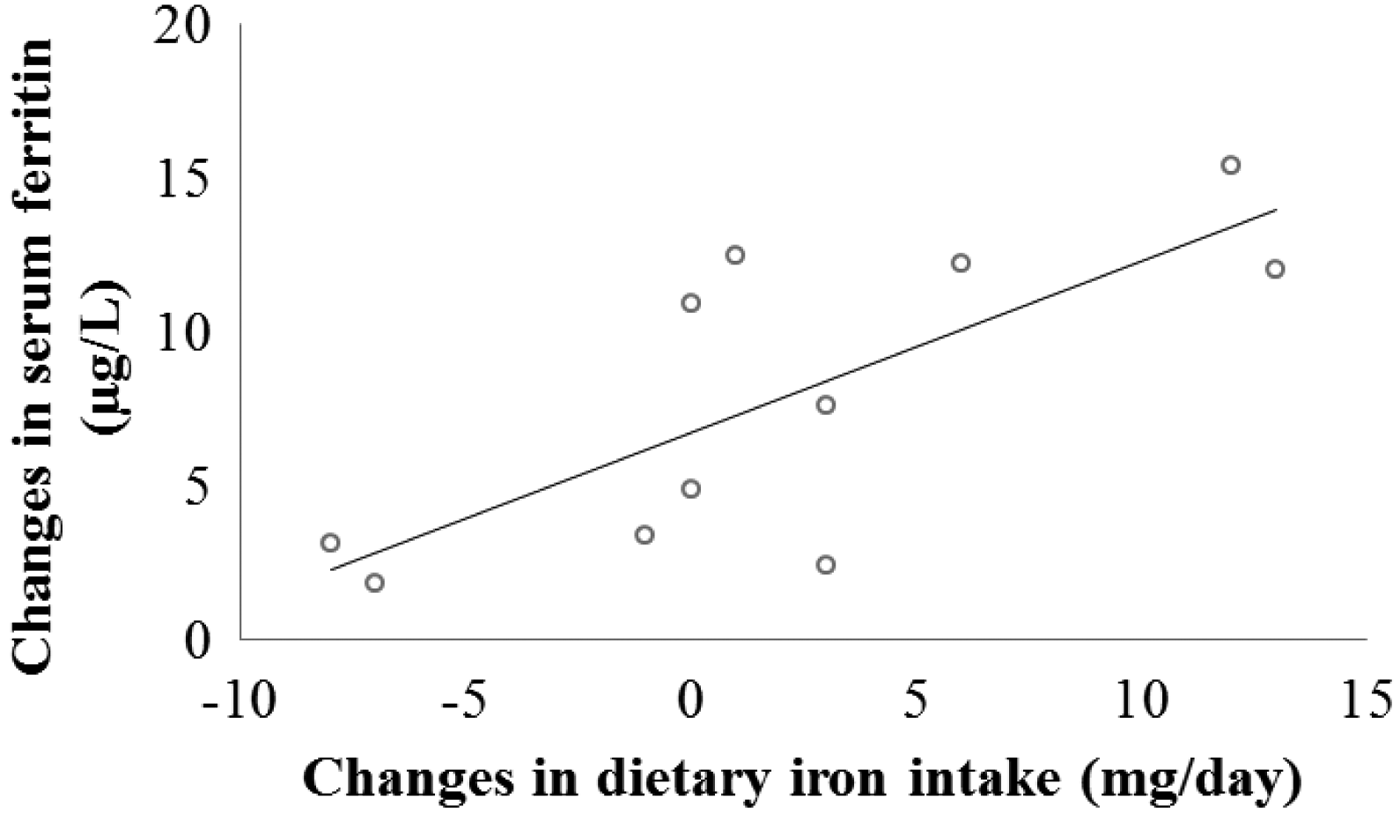Iron is an important micronutrient in energy production pathways and is essential for sufficient erythropoiesis. Female runners are at a higher risk of iron deficiency due to negative iron balance caused by insufficient iron intake and increased iron losses associated with endurance running(Reference Burke, Millet and Tarnopolsky1). Conventional treatments for iron deficiency include pharmacological supplements which often cause side effects including abdominal discomfort, constipation and nausea(Reference Hallberg, Ryttinger and Solverll2). Iron fortified products have been successfully used to increase haemoglobin, serum ferritin levels and to reduce the risk of iron deficiency(Reference Gera, Sashdev and Boy3). However, studies looking at developing and incorporating products naturally rich in iron are scarce. The aim of the study was to evaluate the effects of incorporating developed Teff cereal bread(Reference Alaunyte, Stojceska and Plunkett4) into daily diets on dietary iron intake and iron status of recreational female runners.
Participants (n 11) completed a 6-week dietary intervention study. They were asked to consume 4 slices of iron-rich Teff bread as part of their daily diet. During this period, their dietary habits were assessed by multiple 24-hr recalls; iron status was determined by venous blood analysis for serum transferrin (sTRF), serum transferrin receptor (sTsfR), and serum ferritin (sFer).
Female runners reported inadequate daily dietary iron intake of 10·7 mg/day at baseline, which was associated with reduced iron stores (sFer r = 0·7, P < 0·05). Over a third of all participants showed depleted bodily iron stores (sFer < 12μg/L). Dietary intervention resulted in significantly higher total iron intakes (18·5 mg/day, P < 0·05). Teff bread contributed to 38% of the daily iron intake. Non-significant improvements in iron tissue supply (sTRF 5·4% change, sTsfR 12·8% change, NS) and iron stores (sFer 5·3% change, NS) were observed. The improvements in iron tissue supply indices were strongly associated with prolonged dietary intervention (ΔsTRF r = −0·7, P < 0·05; ΔsTsfR r = −0·6, P < 0·05) and compromised initial iron status (ΔsTRF r = −0·7, P < 0·05; ΔsTsfR r = −0·6, P < 0·05), whilst enlarged iron stored were associated with increased dietary iron intake (ΔsFer r = 0·8, P < 0·05).

Key: *experimentally determined
1 Based on consumption of average daily portion of 200 g for female adult aged 19–50 years of age consuming 1,940 kcal/day
DRVs – Dietary Reference Values
TEI – total energy intake
In conclusion dietary iron interventions using staple food products offer a promising way of improving dietary iron intake and overall iron status of female runners. Teff bread could be used as an iron-rich staple food alternative. It offers the opportunity to improve habitual dietary iron intakes. Favourable trends were observed between improved iron intakes and iron status in this study.

Fig. 1. Relationship between changes in dietary iron and serum ferritin (r = 0·8, P < 0·05 when controlling for dietary confounders, Partial Pearson's correlation




